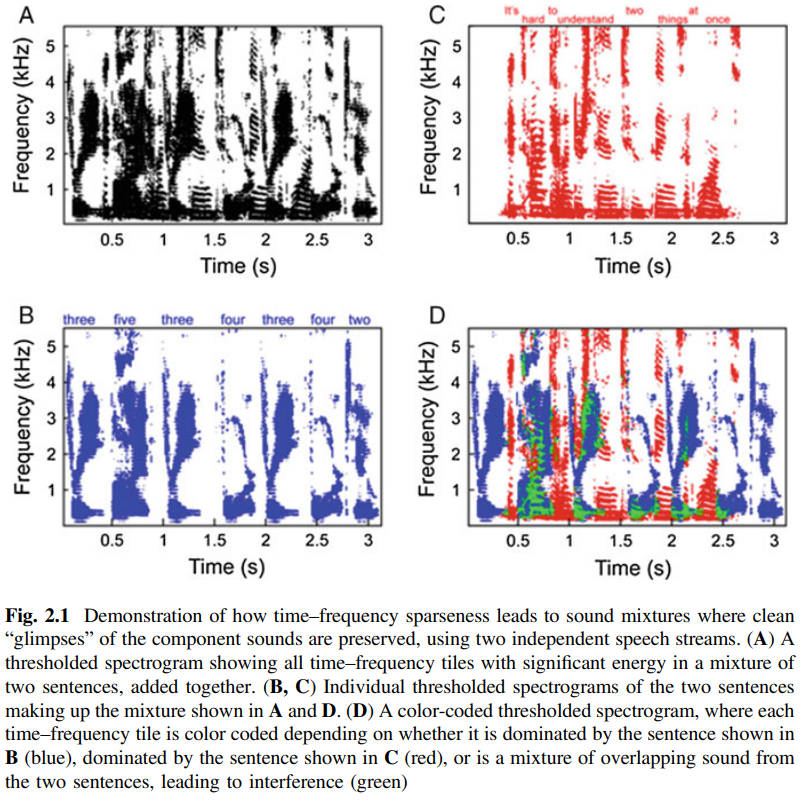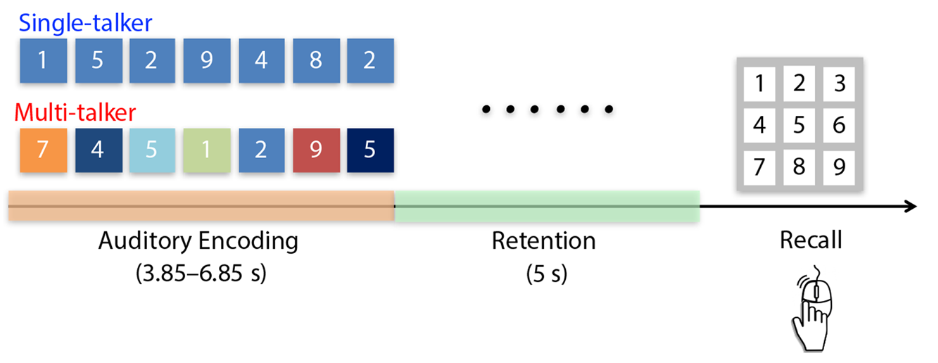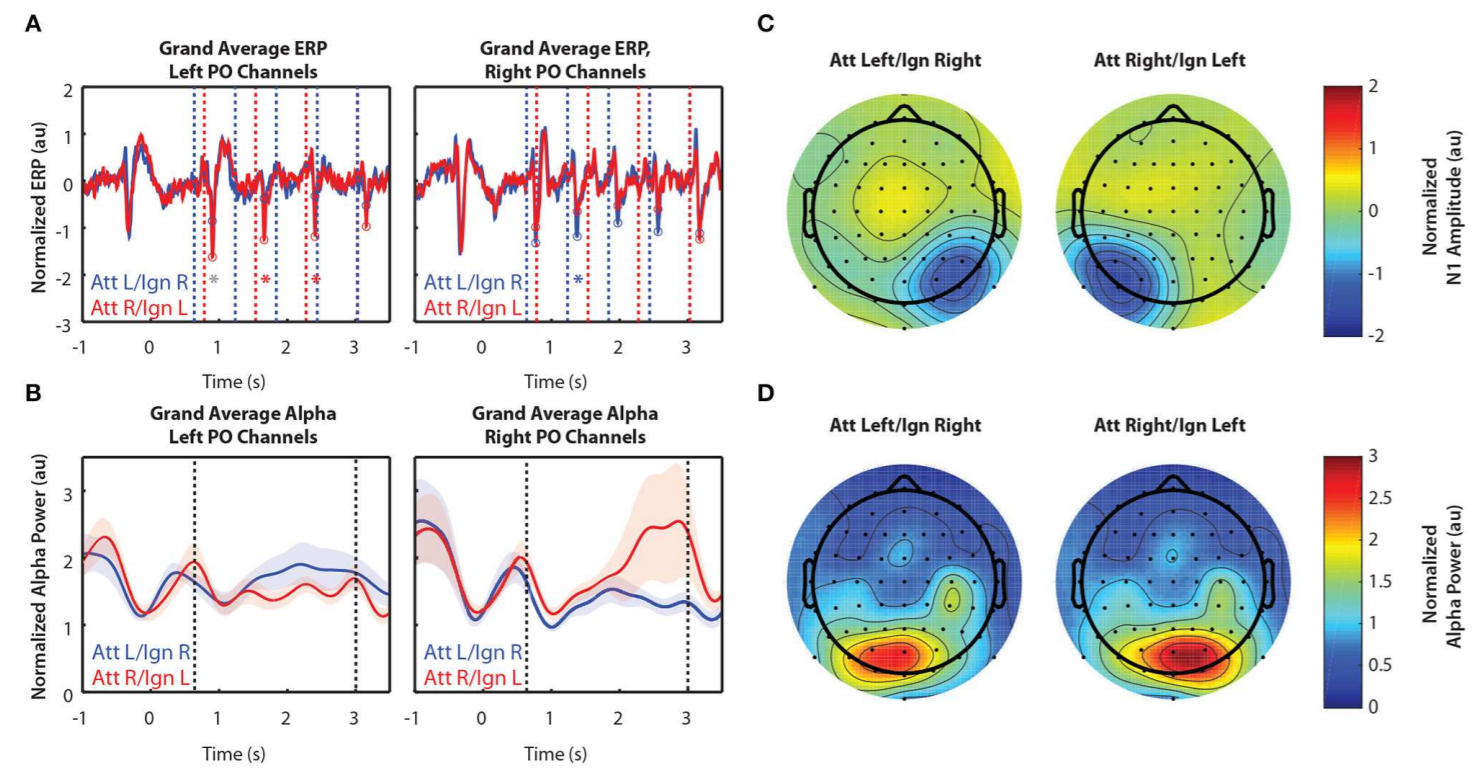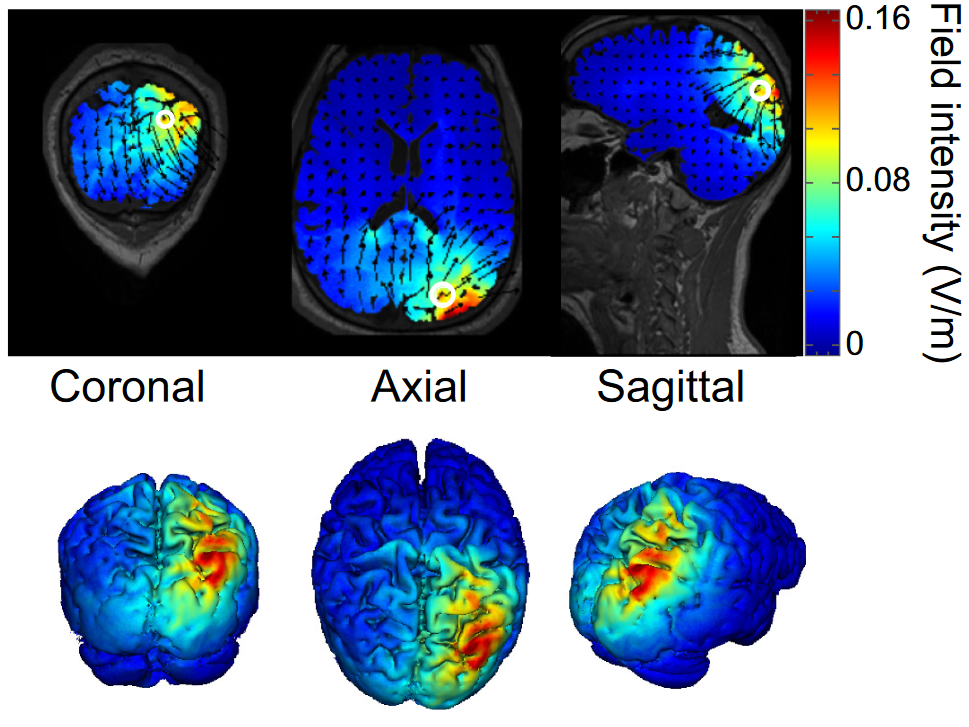Attention & Working Memory
How do we selectively attend to a source from the mixture of sounds we hear in ordinary social settings?

In everyday environments, we hear a myriad of sounds that often conflict with one another. In these settings, humans are able to focus on one stream of sound, even in the presence of multiple distracting streams or loud background noise. A primary focus of the LiMN lab is to understand how we use features and cues in our environment to selectively attend in noisy environments. Our ability to do this is also known as the cocktail party effect, as cocktail parties are noisy environments where we often focus on a single speaker in the presence of many. We particularly focus on understanding how humans use spatial auditory cues to facilitate selective attention. We use a wide range of methods to study auditory attention in humans, including behavioural experiments, electrophysiology, magnetoencephalography and imaging.
Relevant Publications
- Bonacci L and BG Shinn-Cunningham (2020). "Non-spatial features reduce the reliance on sustained spatial auditory attention,” Ear and Hearing, doi: 10.1097/AUD.0000000000000879 (bioRxiv 682088, doi: 10.1101/682088).
- Viswanathan V, HM Bharadwaj, and BG Shinn-Cunningham (2019). “Neural representation of speech during selective attention,” eNeuro, 6, ENEURO.0057-19.2019, doi: 10.1523/ENEURO.0057-19.2019.
- Deng Y, I Choi, and BG Shinn-Cunningham (2019). “Topographic specificity of alpha power during auditory spatial attention,” Neuroimage, 207, 116360, doi: 10.1016/j.neuroimage.2019.116360 (bioRxiv 681361, doi: 10.1101/681361).
- Deng Y, I Choi, BG Shinn-Cunningham, and R Baumgartner (2019). "Impoverished auditory cues fail to engage brain networks controlling spatial selective attention," Neuroimage, 202, 116151, doi: 10.1016/j.neuroimage.2019.116151 (bioRxiv 533117, doi: 10.1101/533117).
- Shinn-Cunningham, BG (2008). "Object-based auditory and visual attention," Trends in Cognitive Sciences, 12, 182-186.
What features affect the maintenance of sensory objects in working memory?
 The accurate formation of sensory objects allows us to identify target speakers from complex mixtures of sound or find matching items in a cluttered visual scene, and these representations also assist retention in working memory. Our brain is able to track the continuity of stimuli by the formation of these objects, sharing common cues such as location, intensity, and sensory-specific features such as color or pitch. In complex signals such as speech, features such as lexical content or talker identity can improve the quality of object formation. However, competing or degraded cues can inhibit the successful formation of sensory objects, which then impairs their recall. At LiMN, we use behavioral measures and imaging techniques to study how sensory objects are formed, where their information is maintained during working memory tasks, and what happens when these representations fail.
The accurate formation of sensory objects allows us to identify target speakers from complex mixtures of sound or find matching items in a cluttered visual scene, and these representations also assist retention in working memory. Our brain is able to track the continuity of stimuli by the formation of these objects, sharing common cues such as location, intensity, and sensory-specific features such as color or pitch. In complex signals such as speech, features such as lexical content or talker identity can improve the quality of object formation. However, competing or degraded cues can inhibit the successful formation of sensory objects, which then impairs their recall. At LiMN, we use behavioral measures and imaging techniques to study how sensory objects are formed, where their information is maintained during working memory tasks, and what happens when these representations fail.
Relevant Publications
- Lim S-J, BG Shinn-Cunningham, TK Perrachione (2019). “Effects of talker continuity and speech rate on auditory working memory,” Attention, Perception, and Psychophysics, 81, 1167-1177, doi: 10.3758/s13414-019-01684-w.
- Noyce AL, N Cestero, BG Shinn-Cunningham, DC Somers (2016). “Short-term memory stores are organized by information domain,” Attention, Perception, and Psychophysics, 76, 960-970.
- Michalka SW, L Kong, ML Rosen, BG Shinn-Cunningham, and DC Somers (2015). “Short-term memory for space and time flexibly recruit complementary sensory-biased frontal lobe attention networks,” Neuron, 87, 882-892, doi: 10.1016/j.neuron.2015.07.028.
To what extent do statistical regularities in our environment modulate selective attention?
 Statistical regularities of many forms are prevalent in natural environments. It is well known that humans are able to recognize these regularities to aid selective attention, but the extent of the effects of specific sensory features in various settings has not been fully defined. We aim to identify sensory characteristics that modulate selective attention according to their regularity. A special case of this is examining how distracting features affect selective attention and modulate performance in psychophysical tasks. We study this using behavioural experiments, electrophysiology, and imaging.
Statistical regularities of many forms are prevalent in natural environments. It is well known that humans are able to recognize these regularities to aid selective attention, but the extent of the effects of specific sensory features in various settings has not been fully defined. We aim to identify sensory characteristics that modulate selective attention according to their regularity. A special case of this is examining how distracting features affect selective attention and modulate performance in psychophysical tasks. We study this using behavioural experiments, electrophysiology, and imaging.
Relevant Publications
- Bonacci L, J Kwasa, A Noyce, and BG Shinn-Cunningham (2020). “Effects of visual scene complexity on neural signatures of spatial attention," Frontiers in Human Neuroscience, 14, doi: 10.3389/fnhum.2020.00091.
- Bulger E, BG Shinn-Cunningham, and AL Noyce (2020). “Distractor probabilities modulate flanker task performance,” Attention, Perception, and Psychophysics, doi: 10.3758/s13414-020-02151-7.
Can neural stimulation modify and enhance attention and working memory?

A new focus in the LiMN lab is exploring the effects of neural stimulation selective attention. An abundance of past research has identified neural correlates of selective attention, but relatively little past work has investigated how stimulation can affect selective attention. One direction we are currently exploring is whether alpha frequency stimulation can modulate selective attention by inducing attentional suppression. We are particularly interested in how auditory spatial attention can be modified by stimulation. We are currently using transcranial alternating current stimulation (tACS) to explore these questions.
Relevant Publications
- Deng Y, I Choi, R Reinhart, and BG Shinn-Cunningham (2019). “Causal links between parietal alpha activity and spatial auditory attention,” eLife, 8, e51184, doi: 10.7554/eLife.51184 (bioRxiv 775718, doi: 10.1101/775718).